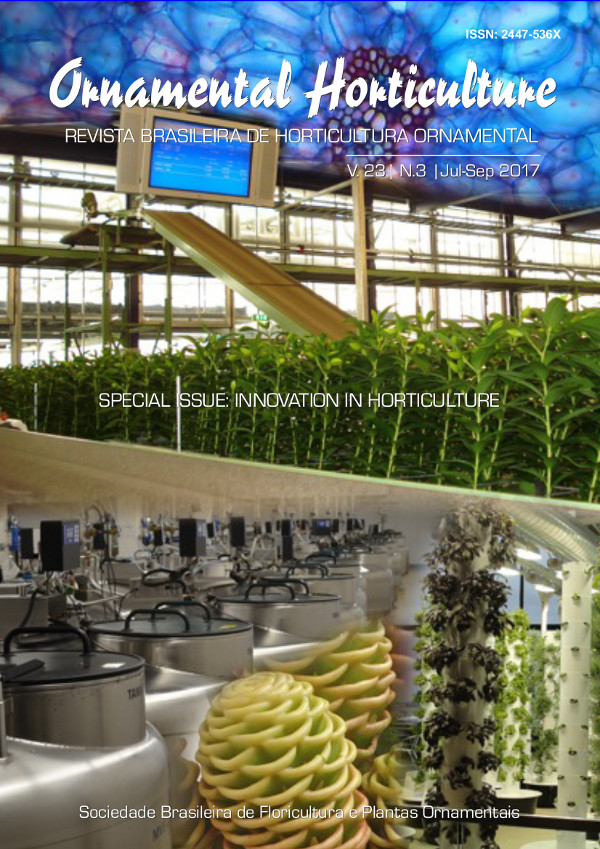Ver ítem
- xmlui.general.dspace_homeCentros e Institutos de InvestigaciónCICVyA. Centro de Investigación en Ciencias Veterinarias y AgronómicasInstituto de GenéticaArtículos científicosxmlui.ArtifactBrowser.ItemViewer.trail
- Inicio
- Centros e Institutos de Investigación
- CICVyA. Centro de Investigación en Ciencias Veterinarias y Agronómicas
- Instituto de Genética
- Artículos científicos
- Ver ítem
A novel source of cytoplasmic male sterility in Calibrachoa pubescens
Resumen
Calibrachoa pubescens is a species native from the south of Brazil, Uruguay and northeast Argentina. An accession identified as 7.3.1.1 was collected at San Martín Department in Corrientes Province, Argentina and is included in the calibrachoa breeding program at the Institute of Floriculture, INTA. This accession is male sterile and produces male-sterile progeny, characterized by the lack of pollen production. Male sterility may be controlled by nuclear
[ver mas...]
Calibrachoa pubescens is a species native from the south of Brazil, Uruguay and northeast Argentina. An accession identified as 7.3.1.1 was collected at San Martín Department in Corrientes Province, Argentina and is included in the calibrachoa breeding program at the Institute of Floriculture, INTA. This accession is male sterile and produces male-sterile progeny, characterized by the lack of pollen production. Male sterility may be controlled by nuclear or cytoplasmic genes with each type presenting a different mode of inheritance. The objective of this research was to present a novel source of cytoplasmic male sterility in Calibrachoa pubescens. Crosses were made in the greenhouse between the male-sterile line 7.3.1.1 as the female parent and seven male-fertile lines of diverse origin. F1s were backcrossed and self-pollinated. Individual plants of the progenies were classified as male-fertile or male-sterile according to pollen viability. Analyses of observed segregations showed that male sterility observed in 7.3.1.1 results from the interaction of a male sterile cytoplasm and nuclear restorer genes. A novel male sterile cytoplasm is now available for breeders. Main advantages of cytoplasmic male sterility in ornamentals breeding are: efficient hybrid production, increased flower longevity, avoidance of pollen allergens and control of plant invasiveness.
[Cerrar]

Fuente
Ornamental Horticulture 23 (3) : 311-318 (2017)
Fecha
2017
ISSN
2447-536X
Formato
pdf
Tipo de documento
article
Palabras Claves
Derechos de acceso
Abierto
 Excepto donde se diga explicitamente, este item se publica bajo la siguiente descripción: Creative Commons Attribution-NonCommercial-ShareAlike 2.5 Unported (CC BY-NC-SA 2.5)
Excepto donde se diga explicitamente, este item se publica bajo la siguiente descripción: Creative Commons Attribution-NonCommercial-ShareAlike 2.5 Unported (CC BY-NC-SA 2.5)


